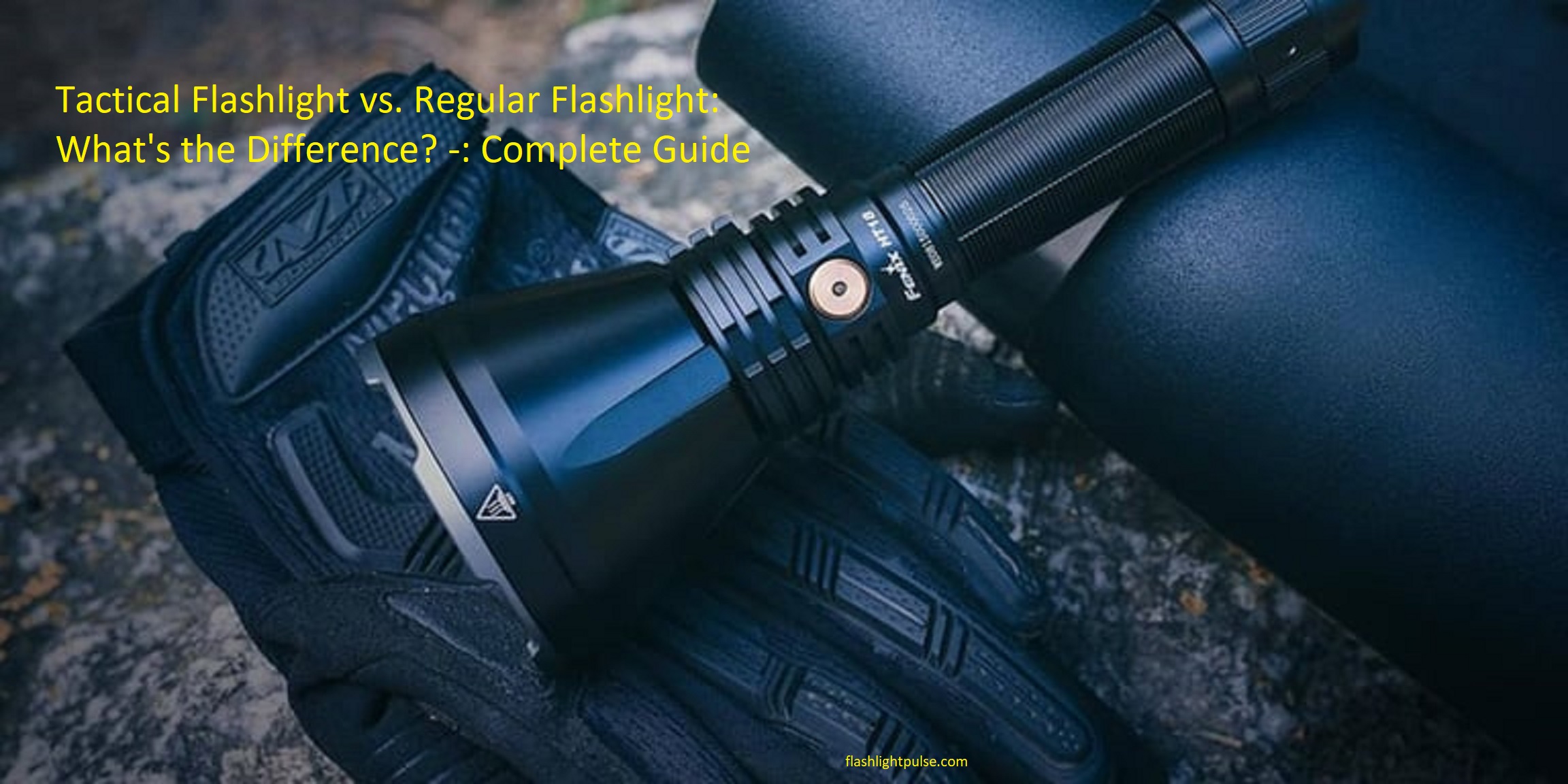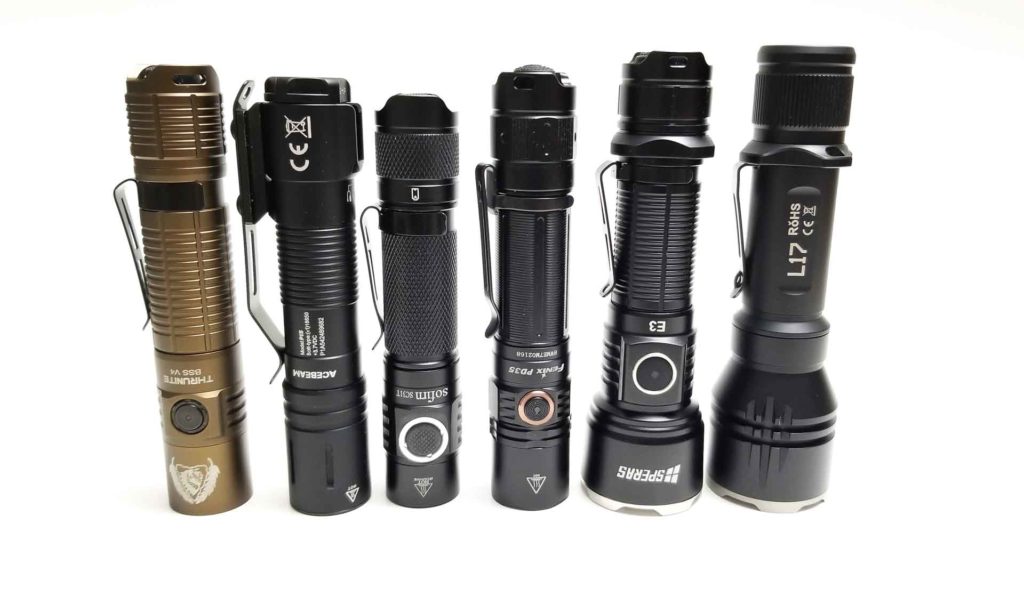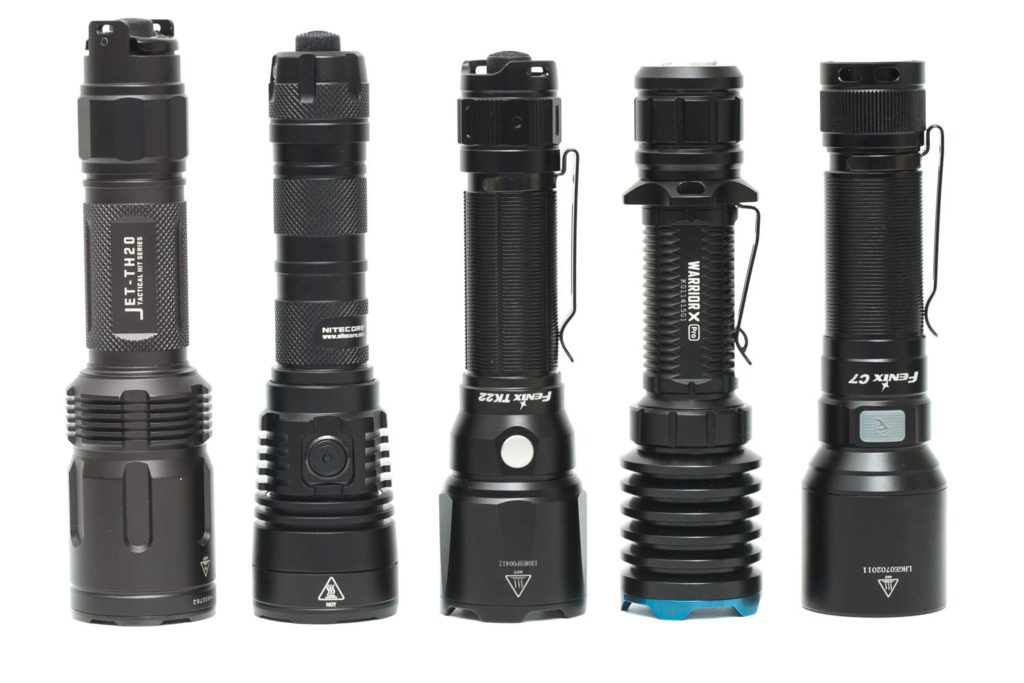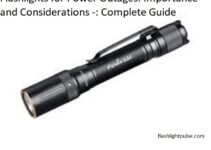If you’re looking for the ultimate light for safety and security, choosing between a tactical flashlight or a regular flashlight can be a challenge. You need to consider its uses, features, and design to ensure you make the right decision.
This guide will help you understand the differences between tactical flashlights and regular flashlights so that you can make an informed choice.
When it comes to finding the right kind of flashlight for your needs, there are many different factors to consider. From their size and shape, to their features and battery life, choosing the right type of flashlight can make a huge difference when it comes to getting the job done. But what really sets a tactical flashlight apart from your typical everyday flashlight? In this guide, we’ll explore the differences between tactical flashlights and regular flashlights, so that you can make an informed decision when it comes time to buy.
We’ll start by looking at what makes a tactical flashlight unique. We’ll then move on to discuss how these flashlights are used in both civilian and military scenarios. From there we will look at some of the best features that come with owning a tactical flashlight before outlining some of their most popular applications and concluding with an overview of their key benefits. By the end of this guide you should have all the information you need in order to make an informed buying decision when it comes time to invest in one of these powerful tools.

Explanation of the topic
The differences between tactical flashlights and regular flashlights may not be very obvious at first glance, but it’s important to understand these distinctions in order to choose the right tool for your particular needs. Tactical flashlights are designed with specific features and components that make them suitable for specific tasks and activities. They are usually constructed from heavy-duty materials and may incorporate features such as higher-lumen lights, rechargeable batteries, knurled grips, bezel edges, adjustable beams, and other special components. In contrast, regular flashlights are more general purpose models that come with simpler construction and fewer features.
Tactical flashlights are often a necessity for professionals who work in law enforcement or occupations where the risk of harm is possible on a daily basis. They run on rechargeable batteries, provide hands-free operation when needed, and can generate an impressive amount of light on a brighter setting than regular flashlights. Additionally, tactical models often include additional shock-resistant materials that ensure it is more resilient when dropped or under physical pressure than traditional torches which can break easily given the same situation.
Regular flashlights have fewer features than tactical models so they tend to be less expensive – but this also means they won’t last you as long over time or be able to deliver the same level of performance should you need it during an unexpected situation such as an emergency power outage or while adventuring outdoors at night. These basic torches might come with convenient focusing capabilities or different brightness settings but they almost always require standard battery sizes rather than being rechargeable like tactical versions which adds additional costs over time if you need replacements regularly due to heavy usage or expense of charges in between uses.
Brief overview of what the article will cover
This article provides an in-depth comparison of tactical flashlights and regular flashlights. It will discuss what makes each type of flashlight unique and advantageous for different applications, as well as the drawbacks associated with each.
Additionally, this article will include a detailed buyers guide to help you select the right flashlight for your needs.
Finally, this article will answer common questions about tactical and regular flashlights to ensure that you understand everything there is to know before making your purchase decision.
What is a Regular Flashlight?
A regular flashlight is a device that produces light from a bulb or LED to illuminate an area. Regular flashlights typically run on batteries and are often portable, making them perfect for camping trips, home renovations, or any other situation where portability is important.
They come in many shapes and sizes, ranging from handheld mini-flashlights to larger lanterns. Regular flashlights can produce anywhere from a faint glow up to a powerful beam of light. Some are powered by replaceable batteries while others may be able to hold their charge in rechargeable form.
Definition and characteristics of a regular flashlight

A regular flashlight is a handheld device that produces a cone of bright light when turned on. It typically uses one or more electric lamps that are powered by a variety of sources, including batteries or solar power.
Flashlights usually have a handle and switch, although there are now different types where the switch can be on the side, up top, or even remotely operated. Other characteristics can include the type of bulb used, type of casing material and protective lens present.
Depending on the purpose for which it will be used, some flashlights may also have features such as adjustable focus, water resistance and variable light output.
Examples of situations where a regular flashlight may be useful
Regular flashlights can be a great solution for many common household and outdoor situations. For example, a basic flashlight is perfectly suitable for everyday tasks such as general lighting around the house or checking on a young child in the middle of the night. It can also be useful in outdoor applications such as hiking, camping, and exploring remote areas.
Depending on your budget and needs, there are flashlights of various shapes and sizes that are capable of varying levels of brightness. Cheaper models may only produce up to 30 lumens of illumination (which is considered an adequate amount of light), whereas more powerful and expensive models may produce more than 500 lumens.
At higher settings, regular flashlights prove helpful when doing things like shining a light across a lake or deep into dark woods to look for signs that you’re approaching human habitation or coming close to large wildlife such as bears. This can also be useful when setting up camp in the evening to give yourself extra visibility while hunting nearby trails or streams.
Regular flashlights are also commonly used by people participating in recreational activities such as spelunking—the exploration and study of caves—as well as night fishing, since these activities require an adequate light source for safe navigation. Depending on its settings, your regular flashlight is always ready for these types of activities when you need it most!
Advantages and disadvantages of using a regular flashlight

Using a regular flashlight has many advantages and disadvantages. Advantages include easy access, portability, reliability and affordability. Regular flashlights are widely available in hardware stores, gas stations and drugstores, so it’s very convenient to purchase one when needed. Additionally, these flashlights are small and lightweight so they are easy to carry with you wherever you go. Regular flashlights tend to be more reliable than tactical flashlights since they don’t require batteries or an extra power source for operation. Finally, these flashlights are usually very affordable compared to tactical models.
On the other hand, using a regular flashlight also has some drawbacks that should be considered before making a purchase. The most obvious drawback is the limited range of illumination offered by regular flashlights since they have weak LED bulbs compared to tactical models. Additionally, these devices often have shorter battery life than tactical models since the small batteries will run out of juice sooner than larger ones. Finally, due to their lack of durability compared to their tactical counterparts, regular flashlights are prone to breaking or losing function quicker than expected if dropped or mishandled.
What is a Tactical Flashlight?
A tactical flashlight is a specialized device used for bright and focused illumination in various situations. Its construction and features differ from regular flashlights in several aspects. First, the most noticeable difference between a tactical flashlight and a regular flashlight is its size. Most tactical flashlights are smaller than traditional models but still have a large battery capacity for providing users with long-lasting illumination.
Tactical flashlights also feature multiple modes of operation, including strobe, SOS, or momentary on/off signaling mode. These modes provide users with different ways to light up their surroundings, depending on their needs at the time. Depending on the model chosen, some also come with zoomable lenses that enable them to provide lighting at various lengths and focus level on objects that are close or far away.
Additionally, many tactical flashlights are made from rugged materials such as aluminum or heavy-duty plastic that makes them more durable and resistant to knocks or drops than regular models. As such, these features make them ideal for uses requiring accurate illumination outdoors in poor lighting conditions or indoors during an emergency blackout situation.
Definition and characteristics of a tactical flashlight
A tactical flashlight is a specialty flashlight specifically designed for military, police and self-defense use. These flashlights are typically designed with a high Lumen count, making them brighter than the average household or commercial flashlight. They are usually made out of aluminum or other tough and lightweight materials, meaning they can withstand bumps, drops and other impacts that would damage an ordinary flashlight.
Tactical flashlights usually have an Anti-Reflective (AR) coated lens to reduce reflections from the beam of light, offering greater efficiency, range and effectiveness in low-light situations. Many will have additional features such as strobe settings for disorientation or self-defense purposes, plus momentary activation (pressing the button will turn on the light only while held down). The tailcap switch can also provide sustained activation capability even when kept pressed on. Some tactical flashlights come integrated with laser sights in order to allow more accurate target acquisition in close-quarter combat scenarios.
Tactical flashlights tend to be more expensive than regular flashlights due to their additional features and special design elements.
Examples of situations where a tactical flashlight may be useful

A tactical flashlight may be an invaluable tool in a variety of situations. The smaller size, durability, and power of a tactical flashlight make it unique and helpful for situations where larger or more standard devices would be less appropriate or prone to damage. Here are some specific scenarios in which a tactical flashlight might be advantageous:
- Police and military operations—Tactical flashlights have grown popular as tools for law enforcement officials and soldiers due to their bright beams, smaller size, and durability. A flashlight that can withstand drops, repeated use, and rough conditions while producing an intense beam is extremely helpful in darkness-based searches or missions that require quickly scanning the area with a light source.
- Hiking—Having a lightweight yet durable device on your backcountry excursions can help you spot potential trouble before it’s too late (e.g., identifying an animal along the trail). Keep note of the general beam distance when selecting your tool; longer-reaching models may cover more ground than shorter-range ones when you’re hiking in unfamiliar areas at night.
- Camping—Whether spelunking through caves or setting up camp after dark, having a strong beam of light nearby is always beneficial; it will help to create depth perception as well as illuminate items around you so you don’t forget essentials like bug spray! High lumens are especially helpful for spotting pests like tarantulas or rocks that could trip unsuspecting hikers trying to find their way back from an day-long exploration session.
- Home defense—Tactical flashlights offer blinding brightness levels that immediately disorient intruders during emergencies. With the right tool on hand, homeowners are better equipped to protect themselves if ever faced with an unfortunate situation inside the home after dark.
- Advantages and disadvantages of using a tactical flashlight
Tactical flashlights offer many benefits over regular flashlights, but there are also some disadvantages to consider before making a purchase. To help you make an informed decision, here is our complete guide to the advantages and disadvantages of using a tactical flashlight:
Advantages:
– Very bright beam of light – because tactical flashlights usually contain LED bulbs, they can produce an incredibly bright beam of light which is ideal for dazzling an attacker in self-defense situations or for seeing in low light settings.
– Durable construction – most tactical flashlights are made from aerospace grade aluminum alloy, making them significantly more durable than ordinary plastic or metal flashlights. This means they will stand up to the rigors of outdoor activities such as camping and hiking much better than regular models.
– Easy to use controls – most tactical models feature easy to use tail switch controls that allow you to quickly switch between different settings with one hand. They are also typically equipped with a memory setting so you do not have to cycle through all of the brightness settings every time you turn your flashlight on.
Disadvantages:
– Cost – due to their superior construction and advanced features, tactical flashlights tend to cost more than their regular counterparts. If cost is a major concern for you, it might be more economical in the long run to buy two or three high quality regular flashlights instead of one expensive tactical model.
– Size – the improved durability and additional features mean that most tactical designs are larger than conventional ones as well, so if space is a consideration for your purchase then regular models might be a better choice in this department as well.
– Can be heavy – because they are often constructed from metals like aluminum alloy, tactical lights can be quite heavy depending on their size and number of batteries used. This can make them cumbersome when carried around on a daily basis or while engaging in physical activities such as jogging or hiking.
Conclusion
In summary, tactical flashlights are designed to suit a variety of specific purposes and extreme environments, from providing night-vision capabilities for the military to providing search lights for law enforcement. Meanwhile, regular flashlights are designed more for general household use and provide sufficient light at shorter distances.
The main differences between the two types of flashlights lie in their purpose, functions, size, durability, illumination power and design features. Ultimately, it comes down to what you will be using your flashlight for that will determine which type is right for you.
FAQs
What makes a flashlight a tactical flashlight?
A tactical flashlight is typically designed for use in military, law enforcement, or self-defense situations, and is characterized by features such as high brightness, durability, and ease of use under stress.
What are the benefits of a tactical flashlight?
The benefits of a tactical flashlight include increased visibility in low-light situations, the ability to disorient attackers, and a durable and reliable tool for self-defense or emergency situations.
Do I need a tactical flashlight?
Whether or not you need a tactical flashlight depends on your personal needs and intended use. If you work in law enforcement or the military, or frequently find yourself in low-light or potentially dangerous situations, a tactical flashlight may be a useful tool to have.
What are the three types of flashlights?
The three types of flashlights are handheld flashlights, headlamps, and weapon-mounted flashlights.
Who uses tactical flashlight?
Tactical flashlights are commonly used by law enforcement and military personnel, as well as by individuals for self-defense and emergency situations.
Which flashlight is better?
The “better” flashlight depends on the intended use and personal preferences. Factors to consider include brightness, durability, battery life, size, and cost.
What is the strongest type of flashlight?
The strongest type of flashlight is typically a high-powered LED flashlight, with some models capable of producing over 10,000 lumens of brightness.
How many lumens is a good flashlight?
The number of lumens needed for a good flashlight depends on the intended use, but generally, a flashlight with 100-300 lumens is suitable for everyday use, while a tactical flashlight may have upwards of 1000 lumens.
What flashlight does the military use?
The military uses a variety of flashlights depending on the specific application, but some popular models include the Surefire G2X, Streamlight TLR-1 HL, and Pelican 7600.
Is 500 lumens enough for a tactical flashlight?
500 lumens may be sufficient for some tactical situations, but it ultimately depends on the specific needs and conditions. Some tactical flashlights may have upwards of 1000 lumens or more.
See More
- Best flashlight for survival 2023
- Best hunting flashlight 2023
- Best keychain flashlight 2023
- Best mechanics flashlight 2023
- Best pen flashlight 2023


